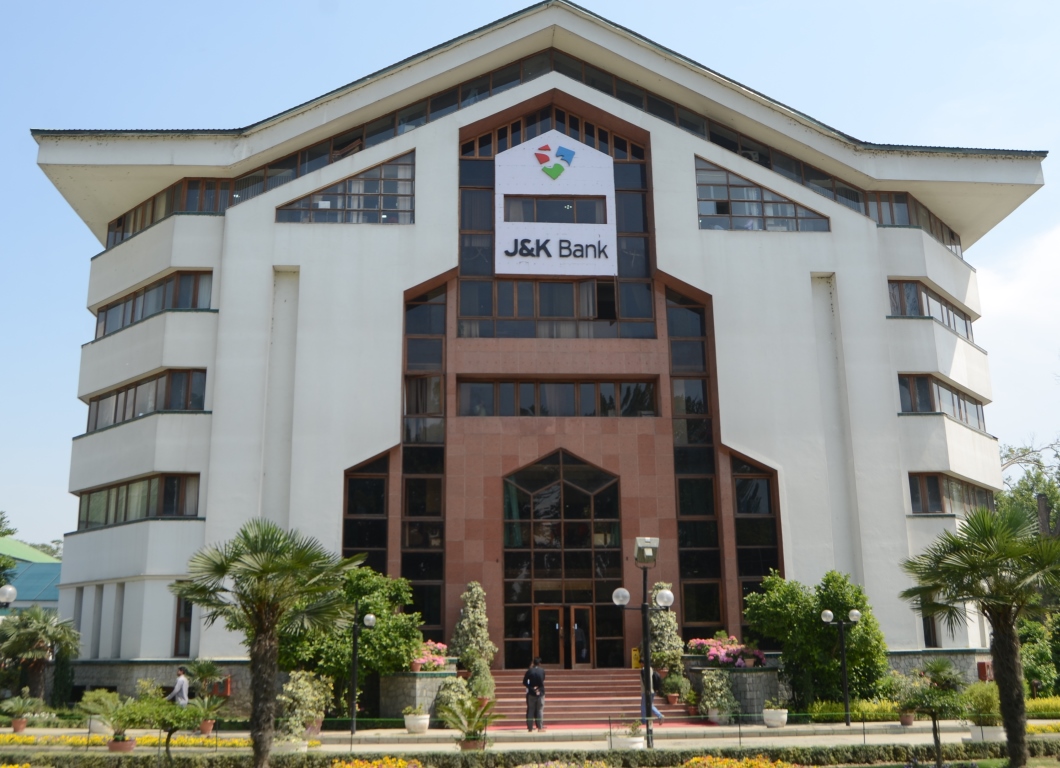by Masood Hussain
SRINAGAR: The Jammu and Kashmir Bank completed 25 years as Jammu and Kashmir’s listed company today. Coinciding with the silver jubilee of the fiat, its stocks appreciated to Rs 75, the highest in the last 52 weeks.

Banks’ bull race is the outcome of historically high profits that the banks pocketed in the last fiscal, a few years after it profusely bled to create a clean balance sheet. For 2019-20, it booked a loss of Rs 1139.41 crore, following which it picked up pace. For fiscal 2022-23, it netted a profit of Rs 1197 crore, the highest in its history, an acknowledgement for the efforts made by MD and CEO, Baldev Prakash. Along with a decadal-high capital adequacy ratio (CRAR) of 15.39 per cent and eight-year best gross NPA figure at 6.04 per cent, the bank also registered its best-ever Q4 profit of Rs 476 crore.
The bank, known for its aggressive strategy to deploy low-cost deposits in a high-yielding “captive market” with a thrust on retail assets outside Jammu and Kashmir has been a huge success story throughout. “In 2008 global meltdown, we were perhaps the only bank that remained almost insulated from the current and undercurrents within and around the country,” one middle-rung banker recalls. “That year’s balance sheet had the global banking map on a page in back with a small dot of JK Bank the only visible entity.”
Credit goes to its human resource, which braved bullets but ensured they earn the trust of the market and retain it as it made the JK Bank the big daddy of the banking sector in Jammu, Kashmir and Ladakh. All this is eventually reflected at bourses where it always was a steadily growing entity.
Making JK Bank a listed entity was not a small exercise. It happened in 1998, at a time when militancy was at its peak and the overall market was unstable. Bank employees moved literally from door to door, explaining what it means and eventually, the issue was oversubscribed. It was precisely on July 21, 1998, when the bank became the premier and the first listed company from Jammu and Kashmir that started trading its stocks at BSE.
The aggressive banking started showing on the stock exchange. It picked up gradually and remained steady for most of the time. It had 1.80 crore shares.
A credit-hungry and CASA-abundant society apart, the bank was always concerned about the staff that built the institution amid thick and thin of Kashmir, at times at personal costs, which sometimes even involved life. This was the reason why the bank management in 2006 fall convinced the Jammu and Kashmir government, its main promoter, to dilute its ownership of 53.17 per cent to 51 per cent. Reason – the balance of 2.17 per cent was to be given to the employees at ESOP, an initiative that did not eventually take off. (Much later employee share purchase schemes were introduced in 2021 and 2023 under which the employees were given an option to purchase the shares of the bank at discounted rates. Both times it was oversubscribed. This added the real stock to the employees’ stakes, already holding huge emotional equity in the bank.)
Watching the growth of the bank, even the best funds on earth were interested in apparently a small bank. By December 2006, as many as 52 foreign institutional investors (FII) were holding 32.81 per cent of its stocks – a movement from speculative hedge and P-notes to long-on funds, which changed the profile of its investment quality. The share valued at Rs 614.
The uninterrupted growth reached a level in 2014 spring when the JK Bank share was valued at Rs 1635. Already decided, the bank finally opted for the stock split. Every share was divided into 10 shares. Now the bank has slightly more than 103 crore shares. In September 2014, the bank split the face value of its shares from Rs 10 to Rs 1. On September 1, when the new scheme became effective, shares of the bank closed at Rs 1631.40 per share.
There were various interventions in the bank in the last five years. The bank got a capital infusion of around Rs 2000 crore from its key promoter that holds more than 60 per cent of its stocks. There are expectations of some more capital infusion in the coming days. Right now, there is not much difference between FII and DII holding 2.2 and 2.4 per cent of stocks respectively.
The bank is expected to improve further as long as its human resource remains robust, exhibiting an appetite for growth and expansion. Though in the last few years, it has marginally given up a few decimals in the market of which it is the leader, it has the capacity of managing three-fourths of Jammu, Kashmir and Ladakh’s economy. The only challenge for the incumbent custodians is that its prestige should remain uncompromised, DNA undiluted and the bank’s practices that it has evolved over the decades should never be seen through the prism of public sector banking.















